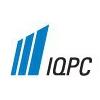Offshore wind power is set for a strong future, not least in Germany where the phase out of nuclear power will see the country lose around a quarter of its generating capacity in the next decade. Germany is already leading the way in wind power on the continent with 27,214 MW of installed capacity and the government is looking to increase this figure further as it favours wind over other renewables.
Although much of this is currently installed onshore, 24 offshore projects have been approved, bringing with them a generation capacity of 7,000 MW. Overall, Europe is expected to see its wind power capacity triple by 2020. This growth brings with it the need to future proof the transmission system, allowing it to cope with the intermittent nature of wind power, while also extending the distribution network to integrate the growing number of wind farms with greater generation capacity located in harsher environments further offshore.
Future Demands on the Grid
 Germany is, of course, not the only country priming itself for future success in the offshore wind sector. Across the EU there are currently 100 GW of wind power projects at some stage of planning, according to figures from the UK's Department of Energy and Climate Change (DECC), and this is ushering a new era of greater collaboration in the distribution of electricity. Incidences in recent months in Germany, where wind output has been particularly high, has left providers paying to remove power from the grid. This is a situation the industry does not want to see but may increase as wind capacity increases. With this in mind, among other issues, the UK, Ireland, Sweden, Denmark, Germany, the Netherlands, Luxembourg, France, Norway and Belgium last year signed an agreement on the North Seas Offshore Grid Initiative. The distribution system would allow power to be transferred from one country to another through subsea cables, while also allowing offshore wind farms to be connected to the grid. The DECC sees the relationship between the countries as being synergetic, giving the example of the UK sending its wind power to Norway to power its hydroelectricity stations when there is a surplus, and Norway delivering power back when wind output is low.
Germany is, of course, not the only country priming itself for future success in the offshore wind sector. Across the EU there are currently 100 GW of wind power projects at some stage of planning, according to figures from the UK's Department of Energy and Climate Change (DECC), and this is ushering a new era of greater collaboration in the distribution of electricity. Incidences in recent months in Germany, where wind output has been particularly high, has left providers paying to remove power from the grid. This is a situation the industry does not want to see but may increase as wind capacity increases. With this in mind, among other issues, the UK, Ireland, Sweden, Denmark, Germany, the Netherlands, Luxembourg, France, Norway and Belgium last year signed an agreement on the North Seas Offshore Grid Initiative. The distribution system would allow power to be transferred from one country to another through subsea cables, while also allowing offshore wind farms to be connected to the grid. The DECC sees the relationship between the countries as being synergetic, giving the example of the UK sending its wind power to Norway to power its hydroelectricity stations when there is a surplus, and Norway delivering power back when wind output is low.
Interested in learning more about this topic? Check out more articles here.
Although much of this is currently installed onshore, 24 offshore projects have been approved, bringing with them a generation capacity of 7,000 MW. Overall, Europe is expected to see its wind power capacity triple by 2020. This growth brings with it the need to future proof the transmission system, allowing it to cope with the intermittent nature of wind power, while also extending the distribution network to integrate the growing number of wind farms with greater generation capacity located in harsher environments further offshore.
Future Demands on the Grid
 Germany is, of course, not the only country priming itself for future success in the offshore wind sector. Across the EU there are currently 100 GW of wind power projects at some stage of planning, according to figures from the UK's Department of Energy and Climate Change (DECC), and this is ushering a new era of greater collaboration in the distribution of electricity. Incidences in recent months in Germany, where wind output has been particularly high, has left providers paying to remove power from the grid. This is a situation the industry does not want to see but may increase as wind capacity increases. With this in mind, among other issues, the UK, Ireland, Sweden, Denmark, Germany, the Netherlands, Luxembourg, France, Norway and Belgium last year signed an agreement on the North Seas Offshore Grid Initiative. The distribution system would allow power to be transferred from one country to another through subsea cables, while also allowing offshore wind farms to be connected to the grid. The DECC sees the relationship between the countries as being synergetic, giving the example of the UK sending its wind power to Norway to power its hydroelectricity stations when there is a surplus, and Norway delivering power back when wind output is low.
Germany is, of course, not the only country priming itself for future success in the offshore wind sector. Across the EU there are currently 100 GW of wind power projects at some stage of planning, according to figures from the UK's Department of Energy and Climate Change (DECC), and this is ushering a new era of greater collaboration in the distribution of electricity. Incidences in recent months in Germany, where wind output has been particularly high, has left providers paying to remove power from the grid. This is a situation the industry does not want to see but may increase as wind capacity increases. With this in mind, among other issues, the UK, Ireland, Sweden, Denmark, Germany, the Netherlands, Luxembourg, France, Norway and Belgium last year signed an agreement on the North Seas Offshore Grid Initiative. The distribution system would allow power to be transferred from one country to another through subsea cables, while also allowing offshore wind farms to be connected to the grid. The DECC sees the relationship between the countries as being synergetic, giving the example of the UK sending its wind power to Norway to power its hydroelectricity stations when there is a surplus, and Norway delivering power back when wind output is low.Interested in learning more about this topic? Check out more articles here.


